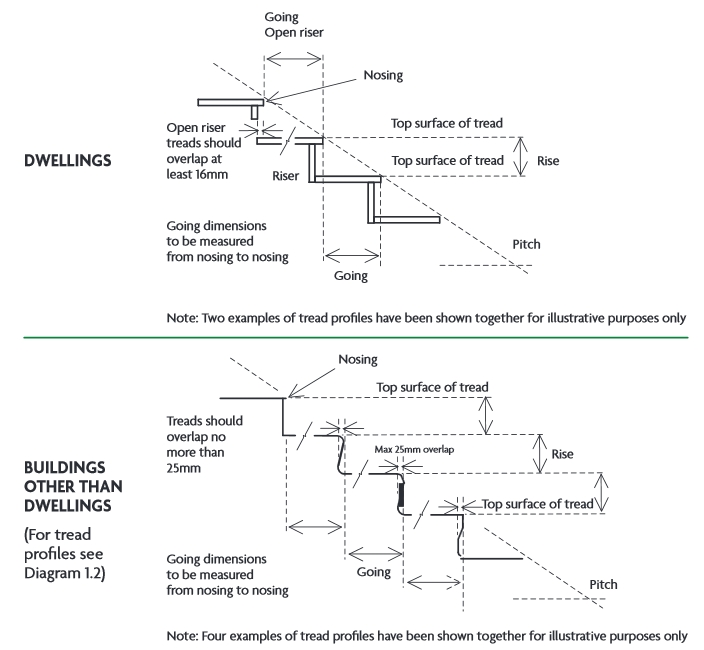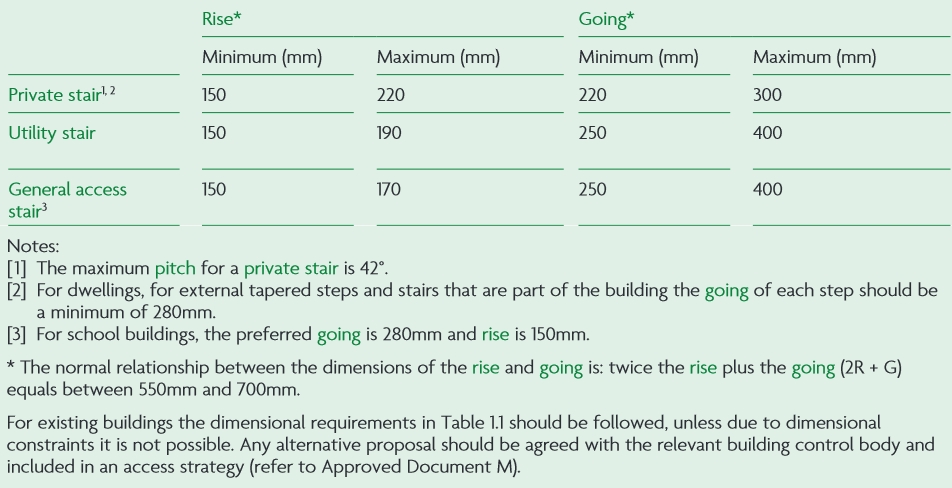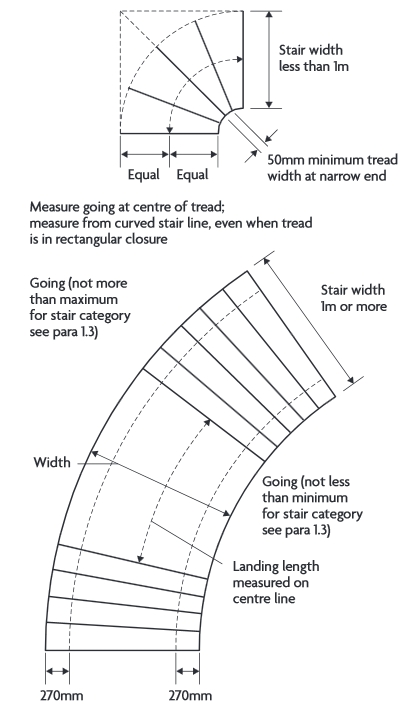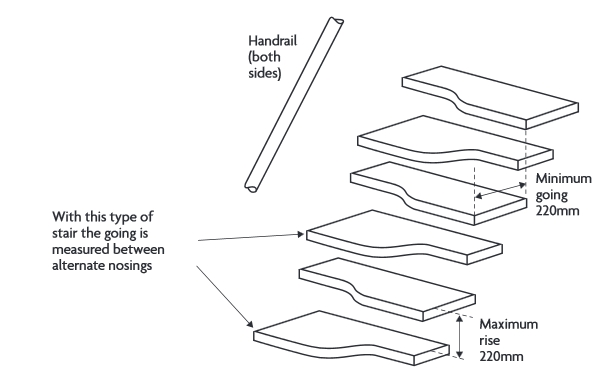Stairs going
Approved Document K - Protection from falling, collision and impact defines the ‘going’ of stairs as the depth from front to back of a tread, less any overlap with the next tread above.
NB: For ramps the going is the length of the ramp between landings.
The steepness, rise and going, handrails, headroom, length and width of stairs should afford reasonable safety to people gaining access to and moving about buildings.
The standard of provision needed to give an acceptable level of safety for access and use depends on the circumstances. It may need to be higher in a public building than in a dwelling, because people may not be familiar with the building and there may be more users. A lower standard may be acceptable where access is required only for maintenance, because greater care can be expected from the people requiring to gain access.
[Image: measuring rise and going]
Treads should be level and the rise and going of each step should be consistent throughout a flight of steps.
[Image: rise and going minimum and maximum values]
For tapered treads, consecutive tapered treads, should use the same going. If a stair consists of straight and tapered treads, the going of the tapered treads should not be less than the going of the straight treads.
[Image: measuring tapered treads]
Requirements for alternating stair treads are shown below.
[Image: alternating stair tread]
[edit] Find out more
[edit] Related articles on Designing Buildings Wiki
Featured articles and news
RTPI leader to become new CIOB Chief Executive Officer
Dr Victoria Hills MRTPI, FICE to take over after Caroline Gumble’s departure.
Social and affordable housing, a long term plan for delivery
The “Delivering a Decade of Renewal for Social and Affordable Housing” strategy sets out future path.
A change to adoptive architecture
Effects of global weather warming on architectural detailing, material choice and human interaction.
The proposed publicly owned and backed subsidiary of Homes England, to facilitate new homes.
How big is the problem and what can we do to mitigate the effects?
Overheating guidance and tools for building designers
A number of cool guides to help with the heat.
The UK's Modern Industrial Strategy: A 10 year plan
Previous consultation criticism, current key elements and general support with some persisting reservations.
Building Safety Regulator reforms
New roles, new staff and a new fast track service pave the way for a single construction regulator.
Architectural Technologist CPDs and Communications
CIAT CPD… and how you can do it!
Cooling centres and cool spaces
Managing extreme heat in cities by directing the public to places for heat stress relief and water sources.
Winter gardens: A brief history and warm variations
Extending the season with glass in different forms and terms.
Restoring Great Yarmouth's Winter Gardens
Transforming one of the least sustainable constructions imaginable.
Construction Skills Mission Board launch sector drive
Newly formed government and industry collaboration set strategy for recruiting an additional 100,000 construction workers a year.
New Architects Code comes into effect in September 2025
ARB Architects Code of Conduct and Practice available with ongoing consultation regarding guidance.
Welsh Skills Body (Medr) launches ambitious plan
The new skills body brings together funding and regulation of tertiary education and research for the devolved nation.
Paul Gandy FCIOB announced as next CIOB President
Former Tilbury Douglas CEO takes helm.
UK Infrastructure: A 10 Year Strategy. In brief with reactions
With the National Infrastructure and Service Transformation Authority (NISTA).


























